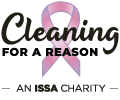News
CDC Updates Guidance for Critical Infrastructure Workers Exposed to COVID-19
September 24, 2020The U.S. Centers for Disease Control and Prevention (CDC) recently updated its interim guidance for Implementing Safety Practices for Critical Infrastructure Workers Who May Have Had Exposure to a Person with Suspected or Confirmed COVID-19. This guidance pertains to critical infrastructure workers, including but not limited to hazardous material responders, janitorial and other custodial staff, as well as workers in critical manufacturing.
To ensure continuity of operations of essential functions, the CDC advises that critical infrastructure workers may be permitted to continue work following potential exposure to COVID-19, provided they remain asymptomatic and additional precautions are implemented to protect them and the community. A potential exposure means “being a household contact or having close contact within six feet of an individual with confirmed or suspected COVID-19.” The timeframe for having contact with an individual includes “the period of time of 48 hours before the individual became symptomatic.”
According to the CDC, critical infrastructure workers who have had an exposure but remain asymptomatic should adhere to the following practices prior to and during their work shift:
- Pre-Screen: Employers should measure the employee’s temperature and assess symptoms prior to them starting work. Ideally, temperature checks should happen before the individual enters the facility.
- Regular Monitoring: As long as the employee does not have a fever or symptoms, they should self-monitor under the supervision of their employer’s occupational health program.
- Wear a Mask: The employee should wear a face mask at all times while in the workplace for 14 days after last exposure. Employers can issue facemasks or can approve employees’ cloth face coverings in the event of shortages.
- Social Distance: The employee should maintain six feet distance and practice social distancing as work duties permit in the workplace.
- Disinfect and Clean Workspaces: Cleaning crews should clean and disinfect all areas such as offices, restrooms, common areas, and shared electronic equipment routinely.
For more information about this updated guidance, please visit the CDC website.
ISSA is working diligently to support the full spectrum of the cleaning industry in the U.S. and worldwide during the COVID-19 pandemic, including providing a variety of government affairs resources. Please consider supporting the ISSA Advocacy Fund in any amount to help us ensure the safety of essential workers like those in the cleaning industry, who are on the frontlines combatting the pandemic. For questions regarding ISSA advocacy, including the association’s response to COVID-19 and the ISSA Advocacy Fund, please contact [email protected].





